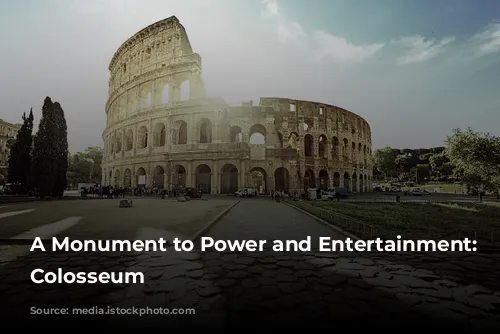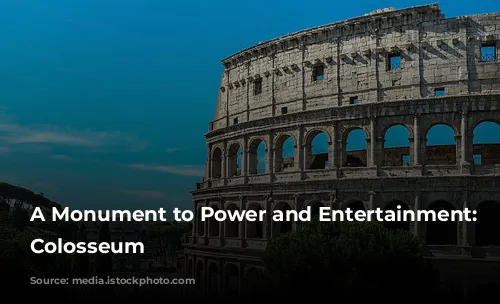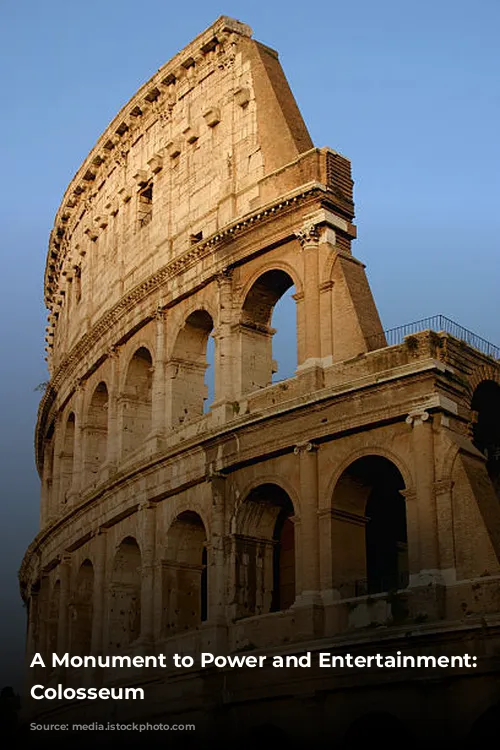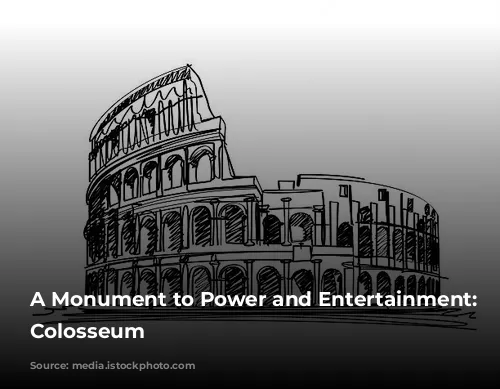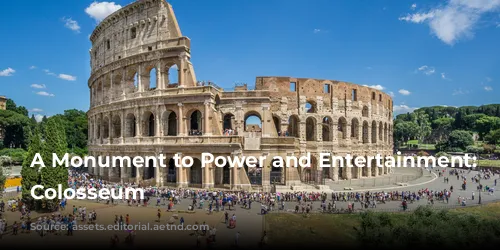The Colosseum, a name that evokes images of gladiatorial combat and roaring crowds, stands as a remarkable testament to the architectural prowess of ancient Rome. While often associated with the brutality of blood-sport entertainment, it remains a powerful symbol of the Flavian Dynasty, one of the most influential periods in Roman history.

The Rise of the Flavian Dynasty and the Colosseum
The Flavian Dynasty, led by Emperors Vespasian, Titus, and Domitian, rose to prominence after a period of turmoil. They embarked on a massive rebuilding program to restore Rome, which had suffered from devastating fires, plagues, and civil war.
One of their most ambitious projects was the construction of a new amphitheater in the city center. Funded by the spoils captured during the siege of Jerusalem in the First Jewish-Roman War, the Colosseum, completed in 80 A.D., served as a dramatic declaration of Rome’s resurgence.

An Architectural Marvel: The Colosseum’s Design and Engineering
The Colosseum was more than just a place of entertainment; it was an innovative architectural and engineering marvel. Built primarily of concrete, travertine, marble, stone, and timber, it soared to a height of 157 feet, roughly equivalent to a 15-story building. Its immense capacity could accommodate an estimated 50,000 to 80,000 spectators.
The Colosseum’s architect remains unknown, but it drew inspiration from earlier structures used to entertain crowds, such as Greek theaters. Its grand design incorporated a spectacular series of columns, arches, and barrel vaults.
Perhaps the most significant innovation was the use of concrete. The Colosseum’s solid concrete foundation played a crucial role in its remarkable survival for over 2,000 years. The builders had to overcome the challenges of constructing in a wetland area near the Tiber River, with poor soil conditions, by digging a deep and sturdy foundation.
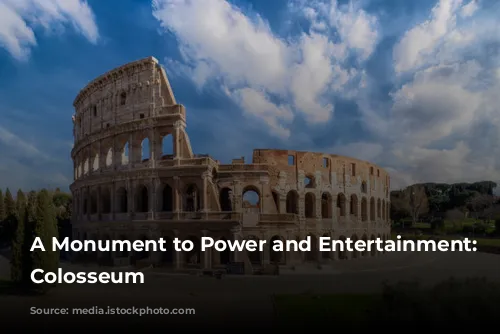
Social Hierarchy and the Colosseum
The Colosseum’s seating arrangements reflected the rigid social hierarchy of ancient Rome. The most coveted seats, closest to the arena, were reserved for the Emperor and the senatorial nobility. The Equestrian order, comprised of merchants, artisans, and bureaucrats, occupied the seats above. The remaining 95 percent of Rome’s population, including women, foreigners, and the poor and enslaved, were relegated to the upper tiers.
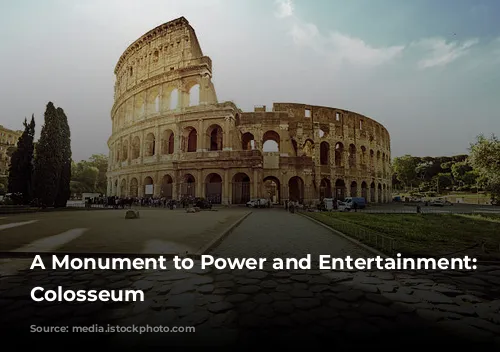
The Colosseum’s Ingenious Design and Features
The Colosseum’s design facilitated the orderly flow of spectators through its four entrances for political and religious leaders and 76 for ordinary citizens. Corridors separated the different social groups, preventing spectators from moving freely within the structure.
However, the Colosseum’s elliptical architecture ensured that all spectators, regardless of their social status, had clear visibility of the action in the arena.
The Colosseum’s sophisticated drainage system allowed for the staging of mock sea battles. Sailors were responsible for operating a retractable awning to protect spectators from the elements. Beneath the arena floor, a complex network of chambers and tunnels, called the hypogeum, housed props, scenery, and participants. An ingenious system of trap doors, pulleys, and lifts facilitated dramatic entrances for scenery and combatants alike.
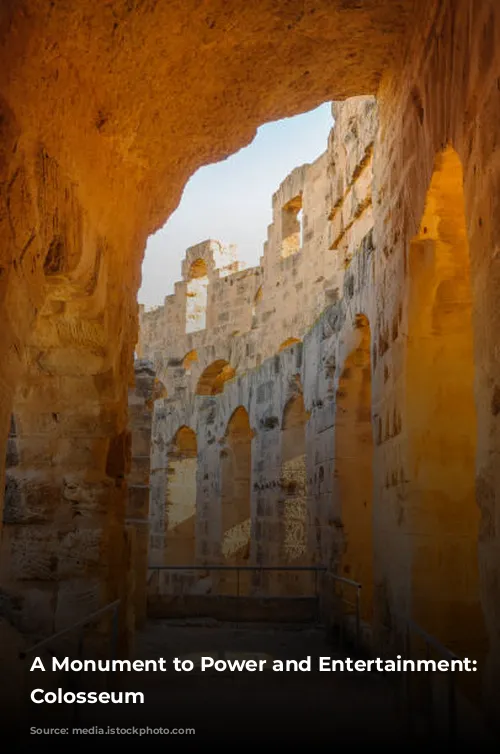
Funding and Labor for the Colosseum
The exact cost of building the Colosseum remains unknown, but scholars believe that it was partly financed by the booty taken by Roman soldiers during the siege of Jerusalem. An inscription at the Colosseum reads, “The Emperor Titus Caesar Vespasian Augustus ordered the new amphitheater to be made from the (proceeds from the sale of the) booty.”
While the conventional wisdom for generations was that the labor was carried out by 100,000 Jewish slaves captured during the Siege of Jerusalem, this assertion lacks firm evidence. While a significant number of slaves were undoubtedly employed in its construction, the exact origin of those slaves is unclear.

The Colosseum’s Enduring Legacy
The Colosseum’s impact extends far beyond its historical significance. It served as a blueprint for modern outdoor sports stadiums. Its use of arches for support, its elliptical shape, and its organized system for controlling the entry and exit of spectators based on seating location have all been adopted by modern stadiums.
The Colosseum stands as a monument to the power, ambition, and entertainment of ancient Rome. It continues to inspire awe and wonder centuries after its construction, reminding us of the ingenuity and creativity of the Roman people.

